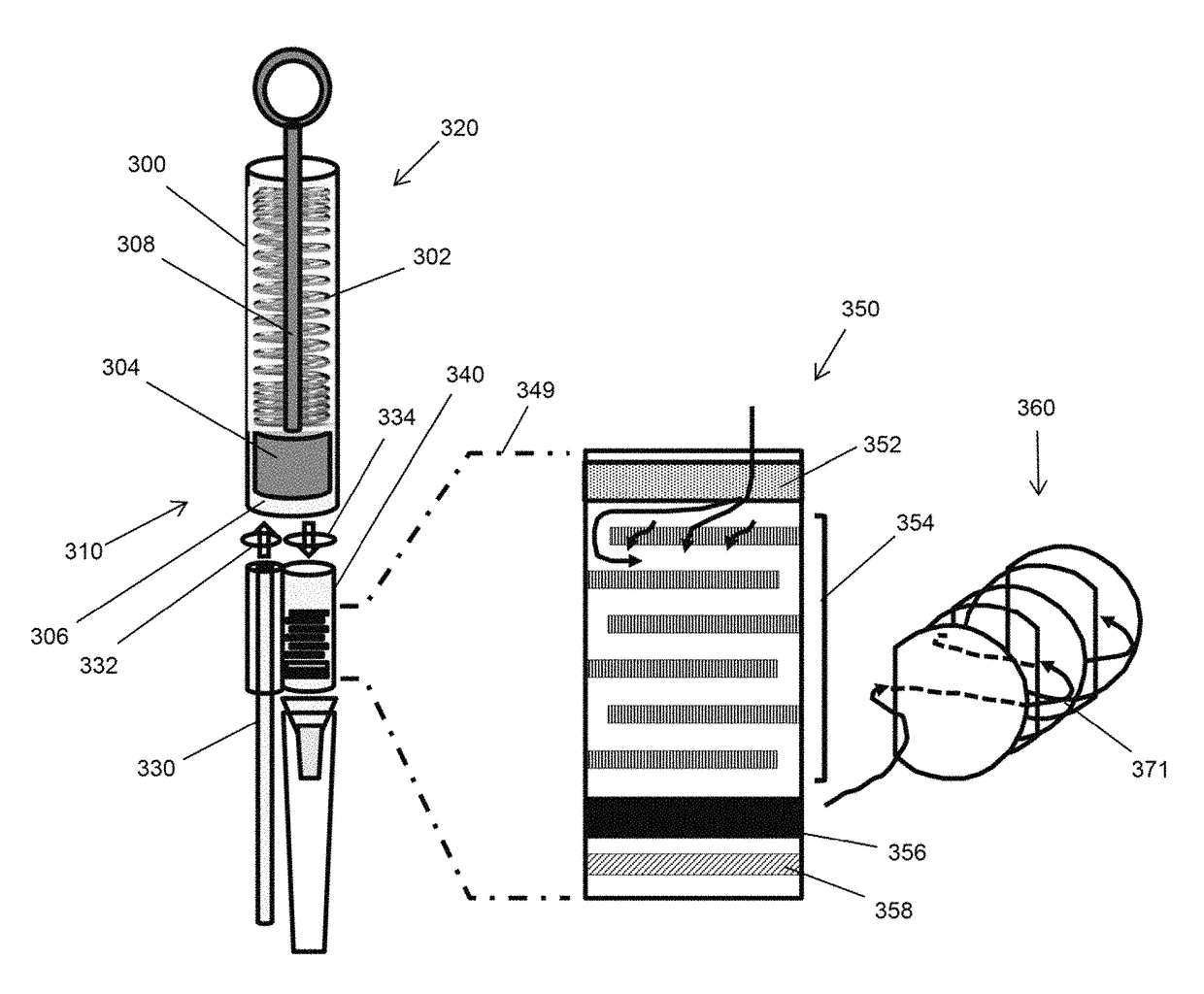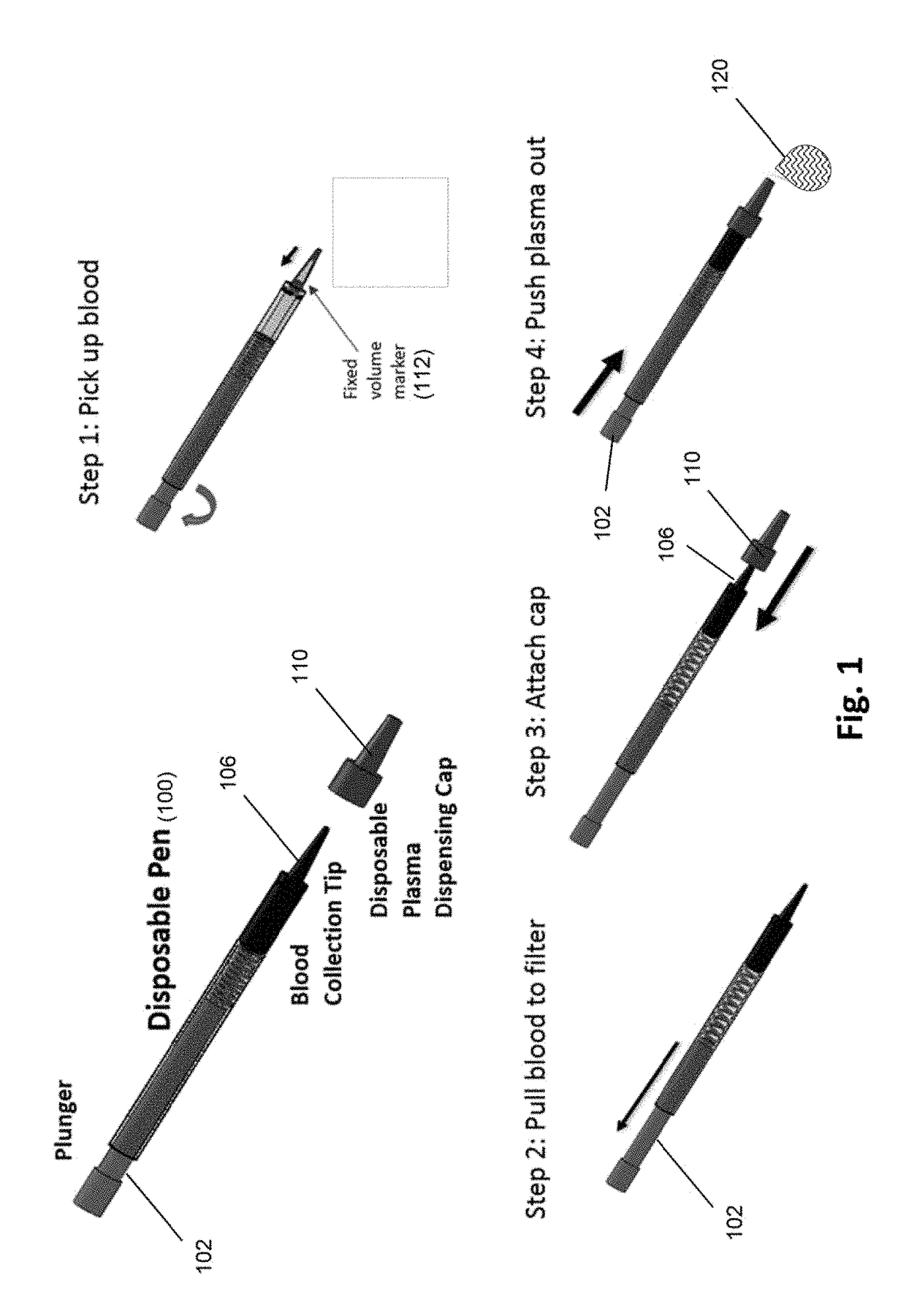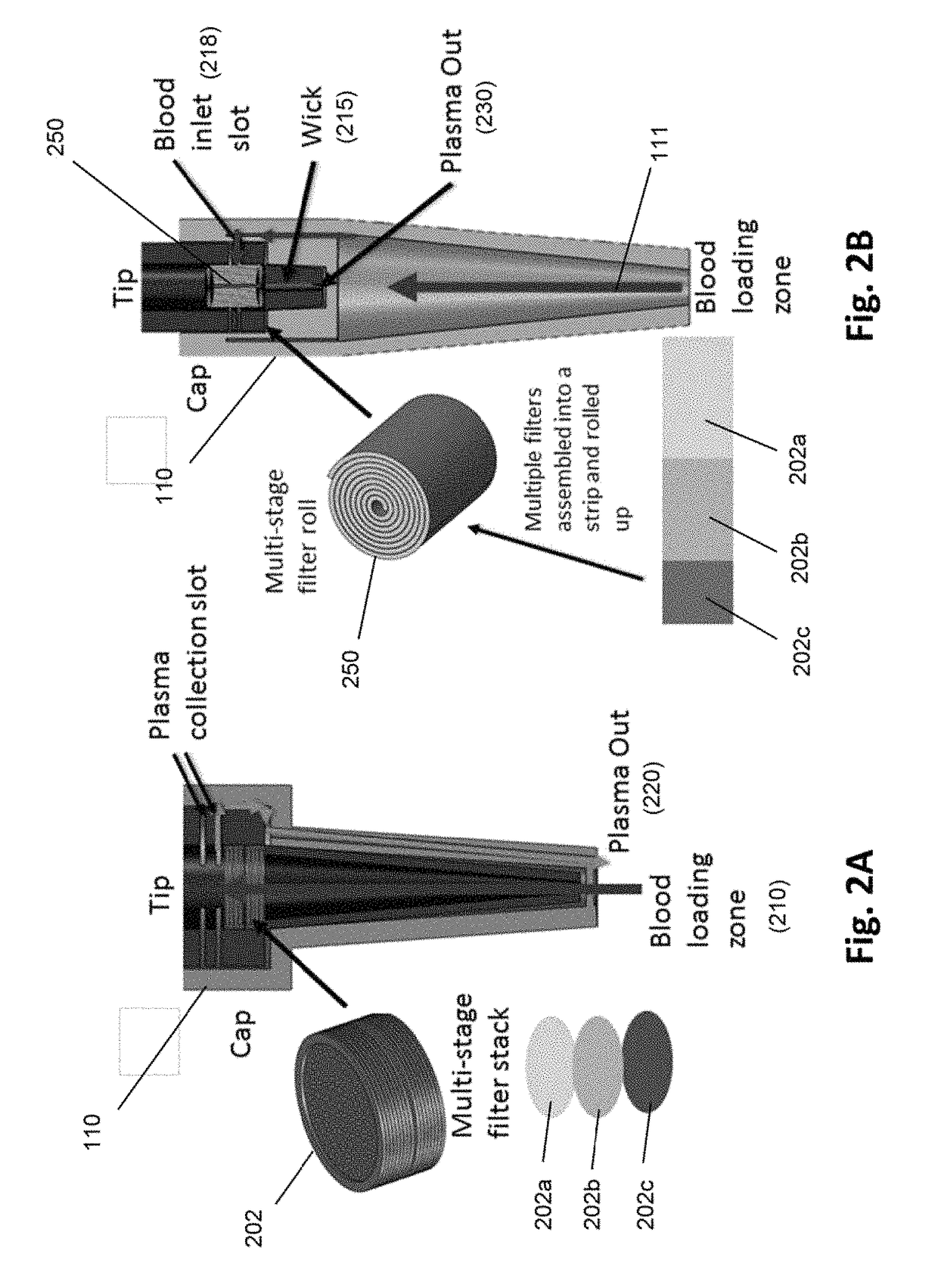Microscale plasma separator
a plasma separator and micro-scale technology, applied in the field of micro-scale plasma separators, can solve the problems of affecting the use of microfluidic-based systems, requiring special training, and requiring bulky and specially trained personnel, and achieves the effects of simplifying and accelerating the use of such platforms, and reducing the number of samples
- Summary
- Abstract
- Description
- Claims
- Application Information
AI Technical Summary
Benefits of technology
Problems solved by technology
Method used
Image
Examples
example 1
Cylindrical Plunger-Actuated Microscale Plasma Separation (MPS) Device
[0050]An exemplary “pen” design of a device of the invention is illustrated in FIG. 1. The pen may include a disposable tip for drawing up blood from the fingertip surface or secondary blood sample container. A spring-loaded plunger draws blood through a filter stack that is integrated inside the tip. A second disposable cap at the end of the tip encloses the blood contaminated tip and seals the entrance end of the tip. The cap contains built-in microfluidic channels. When the plunger is pushed, plasma collected at the end of filter maze is pushed through the channels in the cap and forced out through the tip of the cap, while captured cells remain on the filter surfaces. Some embodiments are configured for viral load assays.
[0051]In one aspect, the invention includes a microscale plasma separation (MPS) device that meets the following performance criteria:
[0052]a) The device processes 30 to 500 μl of blood and ex...
example 2
Spring-Driven Plasma Separator with Multiple Filter Systems
[0070]Components of another embodiment of a microfluidic plasma separator are illustrated in FIG. 3. Cylindrical body (300), having first end (310) and second end (320), contains compression spring (302) and plunger (304) which is moveable along the axis of cylindrical body (300) and which forms a seal with the inner wall of cylindrical body (300), thereby forming sample collection receptacle (306) at first end (310) of cylindrical body (300). Plunger (304) is configured with lever (308) which permits plunger (304) to be manually moved between first end (310) and second end (320). Lever (308) also permits spring (302) to be compressed. Optionally cylindrical body (300) may include a mechanical catch (not shown) to reversibly hold compression spring (302) in a compressed state until it is manually released, which then allows spring (302) to de-compress and push plunger (304) toward first end (310) of cylindrical body (300) wh...
example 3
Screw-Driven Plasma Separator
[0074]As mentioned above, another embodiment of a manually driven pump to deliver substantially constant low pressure to sample is illustrated in FIG. 5A. This embodiment is substantially the same as that of FIG. 3, except that a screw-driven manual pump is substituted for a spring-driven pump. Device (500) comprises sample collection receptacle (502) fluidly connected to inlet tube (504) through port (504) and one-way valve (508). Sample collection chamber (502) is also fluidly connected to filter chamber (512) through one-way valve (514). Sample collection receptacle (502), one-way valves (508 and 514), plunger (520), and inlet tube (504) cooperate as described above to draw in a volume of sample and to drive it into and through filter chamber (512). Filter chamber (512) contains filter and / or filter system (515) and has outlet (518) on downstream side of filter (515). Plunger (520) is sealingly fitted into cylindrical body (525) and rigidly connected ...
PUM
| Property | Measurement | Unit |
|---|---|---|
| pressure | aaaaa | aaaaa |
| volume | aaaaa | aaaaa |
| flow rates | aaaaa | aaaaa |
Abstract
Description
Claims
Application Information
 Login to View More
Login to View More - R&D
- Intellectual Property
- Life Sciences
- Materials
- Tech Scout
- Unparalleled Data Quality
- Higher Quality Content
- 60% Fewer Hallucinations
Browse by: Latest US Patents, China's latest patents, Technical Efficacy Thesaurus, Application Domain, Technology Topic, Popular Technical Reports.
© 2025 PatSnap. All rights reserved.Legal|Privacy policy|Modern Slavery Act Transparency Statement|Sitemap|About US| Contact US: help@patsnap.com



